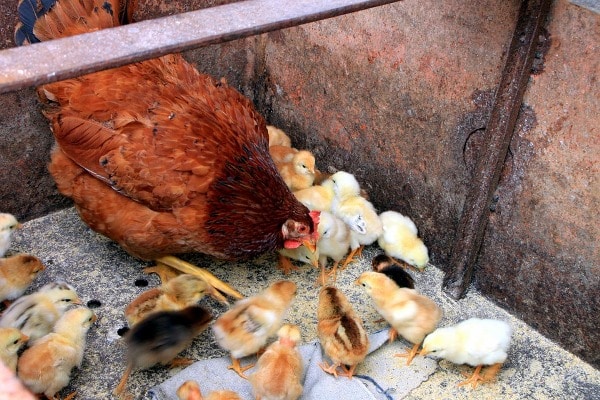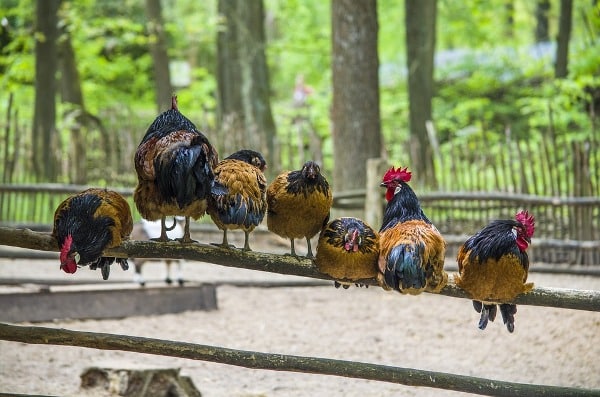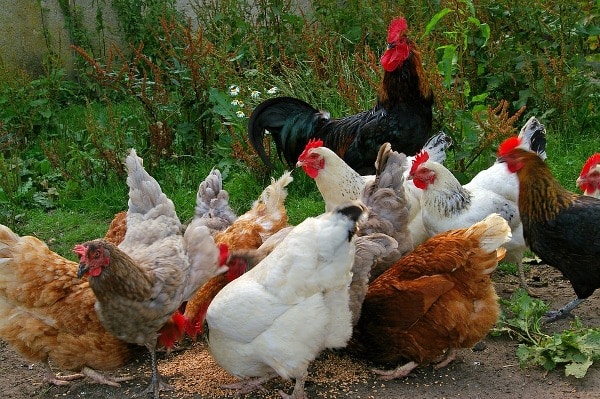Chicken Feeding Guide for Layers and Broilers
Let us talk today the details of chicken feeding guide.
Introduction:
Feeding obtains the highest percentage of the cost of poultry production. It accounts for about 75 percent of the whole cost of production. Chicken feeding guide varies with species of poultry animals; feeding chicken in the right quantity and quality will greatly develop the productivity of the enterprise and increase the efficiency of the poultry feed.
There are different types of poultry feeds;
- Pellets
- Mash
- Crumbs
The mash is normally served to chickens because of its simplicity and it costs less compared to pellet and crumbs. However, the pellet is the best type of poultry feeds as it allows even release of nutrients. Laying chickens fed with chicken layer pellets would have excellent access to all the nutrients obtainable in the feed and lay maximally. The chicken feeding schedule is very important in commercial poultry farming.

Chicken feeding guide:
It is very imperative to identify the physiology of chickens before feeding them; this will enable the farmer to know what to feed chickens naturally, what not to feed chickens and maybe determine the cheaper ways to feed chickens. Chickens are monogastric animals; this means that they have an easy stomach like humans. Though, they do not eat like humans.
Chickens, irrespective of their age, will mainly eat to satisfy their energy requirement. After this is met, chickens stop to eat. But in humans, eat to satiation. In poultry feeding guide, chicken diet is formulated about the energy requirement of the chicken.
There are 2 species of poultry birds; the meat type and egg type.
The meat type species is the broiler chicken while the egg type is the laying chicken. The nutrient necessities of these chickens are not the same. There is a difference among broiler feed and layer feed; this is because the nutrient composition of chicken layer feed will stimulate egg laying while broiler feed will stimulate rapid expansion rate. What is the difference between layers and broilers? Chickens raised for eggs are generally called layers while chickens raised for meat are often called broilers. On the other hand, a broiler must yield more meat and hence should be able to grow well.
Feeding schedules for chickens:
Poultry feeds are considered to include all the protein, vitamins, minerals, and other nutrients essential for proper growth, egg production, and health of the birds. Feeding any other ingredients, mixed with the feed or fed separately, upsets the stability of the nutrients in the “complete” feed. Feeding additional grain or supplement with the total poultry feed is not recommended.
Feed chicks a “starter” diet soon following they hatch. Continue feeding the starter feed until they reach six or eight weeks of age. The starter diet has the highest stage of protein a chicken receives during its lifetime. As the chick matures, it requires a lower percentage of dietary protein and a higher plane of energy.
After the chicks get to 6 or 8 weeks of age, feed them a “finisher” diet (to broilers) or a “developer” diet (to pullets or cockerels saved for breeding purposes). Feed broilers a finisher diet until they get to slaughter size. Feed the pullets and cockerels a developer until they are at least twenty weeks of age.
When egg production starts, feed them a “layer” ration until egg creation ends. Remember, chickens saved for egg production are fed pullet-type diets, not broiler diets, despite being from broiler or egg-type stock.

Chicks feeding program:
The chick’s phase of the chicken growth stages starts with a day-old to four weeks of age. During this period, some medications and good attention being paid to the chicks, especially the feeding. Heat is very important during this phase to start the appetite of chicks, making them feed well.
What to feed chicks is not similar to what you feed laying chicken. Day old chicks are fed chick starter feed; Layer pullet chicks require 18 to 21% protein chicken starter. This type of chicken feed is generally higher in nutrients. This poultry feed allows rapid growth and growth of the tissues, bone formation and enhances overall performance through this phase of the chicken growth stages.
The chick starter feed is served in a plastic chicken feeder because of simple cleaning and handling during the first 10 days of brooding. After ten days, feeds should be served a gravity chicken feeder in preparation of the other growth stages. Water is one of the most important nutrient requirements for poultry. In the absence of chicken feed, water must certainly be present. Water must be served using a clean chicken water feeder.
As chicken feed to satisfy their energy necessity, chicks pick up all the energy sources in the chick starter diet. Broiler chickens need a high energy diet; a broiler feed contains 3200Kcal/kg, from day old to market size, usually 8 weeks and above. When the energy content is too low, chicks will eat more to suit their energy requirements; however, high energy diet will make chicks eat less. When chicks eat less, there is a high tendency of deficiency of a few nutrients as the chicks will not fully utilize the feed.
Layers chicken
Layer chickens are such a special species of hens, which require to be raised from when they are one day old. They start laying eggs commercially from 18 to 19 weeks of age. They remain to lay eggs continuously till their 72 to 78 weeks of age. They can create about one kg of eggs by consuming about 2.25 kg of food during their egg laying period. For the function of producing the hybrid egg layer, consider the various characteristics of cock and hens before breeding. There are various types of highly egg productive layer breeds obtainable throughout the world.
Layers feed programme:
Laying birds approach to lay at around 16 weeks; during the beginning of lay, layers can be fed a CP of 18% to arrange their physiological system for laying. When layers fully come to lay, the standard layer feed must comprise 17% CP. The classification of Layer feed is into three types with different composition, according to NRC (Nutrient requirements of poultry) 1994:
The Starter feed for Layer pullet chicks must contain 18-20% CP and energy content of about 3000 Kcal/kg. The pullet feed should be fed from 0 to 6 weeks.
The Grower feed which contains 14 to 16% CP and energy content of about 3000Kcal/kg. This pullet feed should be fed from 6 to 12 weeks of age.
Developer or pre-layer diet which contains about 12 to 14%CP and energy content of about 3000 Kcal/kg. This layer feed must be maintained from 12 weeks till lay, approximately 20 weeks.
Feeding for Layer Poultry Farming:
There are many companies obtainable throughout the world, which are producing commercial feed and feed supplements for layer chickens. You can buy feed from your local market or create the feed at your own house. You have to be sure that the feed and feed supplements you bought are enriched with necessary food value.
Protein, Vitamins, and Mineral are very important for laying hens which are affecting the value of eggs, layer poultry fertility, and layer bird’s health.
- Provide 2% of calcium for 2 weeks after their birth.
- If you observe they are not gaining expected weight, then you have to serve a starter feed for eight weeks.
- Serve feed 2 or 3 times in a day till their 18 weeks of age.
- The demand for feed increases very fast when the birds begin laying.
- Provide them layer poultry feed according to their age and weights.
- Don’t decrease the quantity of feed while lying (even if their weight increases).
Broiler chicken
Broilers have a good feed to meat converting ratio. So quality feeding is important for maintaining a profitable broiler poultry farming business. Broilers need more energy and protein in their food. The major difference between layer poultry feed and broiler poultry feed is that ‘broiler poultry needs extra nutrient ingredients than layer poultry’. So broiler poultry feed must contain to be enriched with high nutrient ingredients.
Feeding broilers:
Broiler chicks require broiler starter feed for the first 4 weeks of their life. The broiler starter feed must be at least 20 percent protein, preferably 23 percent protein. After 4 weeks, you should feed a 19 percent protein feed (broiler developer or finisher).
Feeding schedule for broilers:

Broiler chickens are genetically bred for meat production; they reach market weight faster than other chicken breeds. Broiler feed ration is described by high protein content and energy; this specification conforms to their genetic make-up. Types of broiler feed are given below;
There are two types of broiler feed namely;
- Starter feed for broiler chicks
- Broiler chicken finisher feed
The starter feed for broiler chicks is fed to broiler chicks between the ages of 0 to 4 weeks. During this period, aside from the broiler feed, heat is important as earlier stated. The broiler starter mash contains a high CP (crude protein) of 23-24% and energy content of 3200Kcal/kg.
The broiler chicken finisher diet must be fed from 5 weeks to 8 weeks, ideally. This broiler feed contains a CP of 20 to 22% and equal energy content as the starter diet.
When broiler feed is fed in the right quantity and quality, the chicken produces faster and healthier. For effective costing; you need to know the amount of feed per chicken. In the case of broiler chicken; how much does a broiler chicken eat from day old to adult weight? Ideally, a broiler chicken will consume 2.5 to 4kg or more of broiler feed, depending on the predetermined market age.
Poultry feed supplement:
As the feed is the major cost of poultry production and which considerably affects the production performance of the birds. So feed and feeding are the main important consideration for efficient poultry farming. Improper feeding is not affecting production performance but also causes several deficiency diseases.
Also, the feed needs to have all the nutrients like carbohydrates, protein, fats, minerals & vitamins in the right proportion. In addition, some additives to facilitate digestion and growth are often added in reputed commercial feed.
At times, the poultry ration needs to be supplemented to develop the nutritional value of the poultry feed. Poultry feed supplement is always in the form of premixes which is commercially obtainable. Poultry feed supplements are added to several types of poultry feeds. For layer feed, calcium, phosphorus and vitamin D are very important for the production of a good quality shell and bone creation. Calcium necessity varies with age, ambient temperature, the rate of lay and egg size. Normally, laying hen requires 3.4g of calcium per day and 3.8g of calcium per day after 40 weeks of age.
Lack of calcium in layer chicken diet can effect in thin-shelled eggs, lost egg production, cannibalism and egg eating. Feeding eggshells as a source of calcium are not satisfactory because of the reduced digestibility of the shells. Laying hens require about 4% calcium in their diet.
Also, in broiler chicken feed, they require Calcium and Phosphorus for bone formation mainly to carry the weight, thus avoiding leg problems as the chicken grows. Calcium and phosphorus are added at a ratio of 2:1 in every chicken diet. A good source of calcium such as limestone or oyster shell should be included in the diet or in a hanging feeder.
That’s all folks about Chicken Feeding Guide for Broilers and Layers.
Read: Ideas for Aeroponic Gardening.
thanks for the information
Thanks for the useful and detailed exposition. I like to have a detailed list of the components of poultry feed with their percentage.
It’s good indeed ,, better work
Useful information thank you